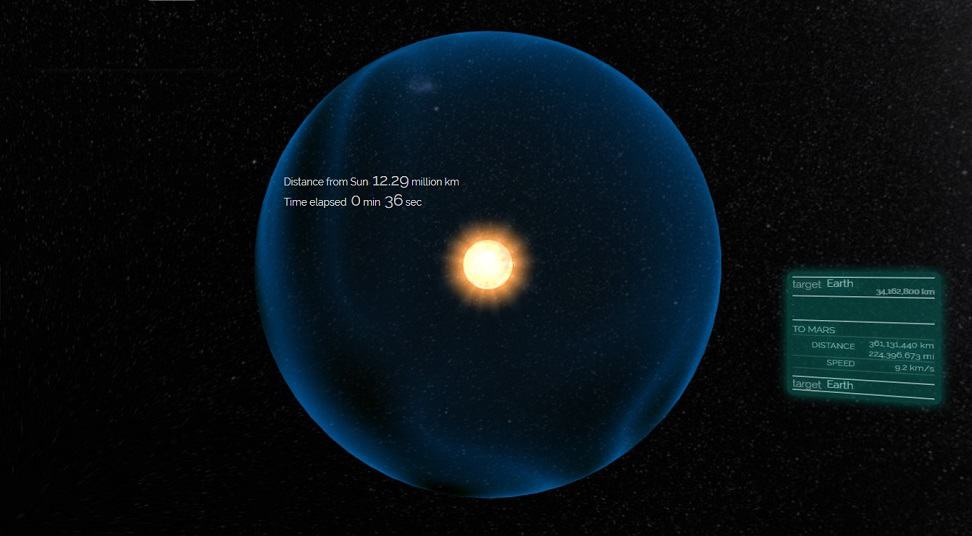This lightspeed simulator shows you exactly how ‘slow’ the speed of light actually is! Simply double click on a planet inside our solar system, and watch as the outward ‘light speed’ bubble expands.
Many people feel as if the ‘speed of light’ is a powerful force of nature – the ultimate standard for speed and acceleration. However, in the grand scheme of things, the speed of light is actually quite tame.
3D Lightspeed Simulator
Hint: Click on a planet
Notice how the sheer scale of the solar system reveals the speed of light to be a slow and steady force. In fact, you could sit here and watch the speed of light reach the edge of our solar system from Earth nearly all day.
When you observe the simulation, you’re forced to consider two logical options: Either the speed of light isn’t the ultimate force we’ve been led to believe it is, or the scale of the galaxy is unbelievably large.
The truth lies somewhere in the middle.
You see, the speed of light is 299,792 kilometers per second. At this speed, it would take 2.51 seconds to reach the moon and back from the surface of Earth. However, if we’re to zoom out and attempt to reach another planet, the speed of light becomes far less shocking.
Much of our solar system still remains an unchartered mystery today. As our technological prowess increases, we’ll undoubtedly see more nations make the voyage into outer space.
In the future, we could see advanced space craft with the capacity to travel at near light speed; will these space craft reach our loft expectations? Only time will tell.
The scientific ability of our entire species will be put to the test as we explore the unknown. Nations have tried and failed (miserably, I might add) to reach the relatively short trip to the moon from Earth.
When you take a moment to realize the sheer size of the universe we live in, it really is a wonder of imagination.
Idea: Dr James O’Donoghue (@physicsJ)
*This Interactive 3D Simulation is built on data provided by NASA JPL HORIZONS database for solar system objects and International Astronomical Union’s Minor Planet Center. Distances and speeds are estimates based on this data.
Photo Credit and other: NASA, ESO/S. Brunier, NASA/JHUAPL/SwRI, NASA/JPL-Caltech, JAXA, University of Tokyo & collaborators, UH/IA, Solar System Scope/INOVE CC BY 4.0, Wikipedia/Creative Commons Attribution-ShareAlike License, icons8.com, Péter Eke, NASA/Goddard/University of Arizona/Roman Tkachenko, Wikimedia Commons, Hayabusa 2 Arrival illustration by Akihiro Ikeshita (permission granted), oNline Web Fonts, Font Awesome, Galaxy vector created by stories – www.freepik.com

